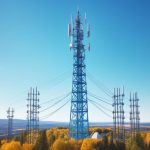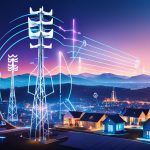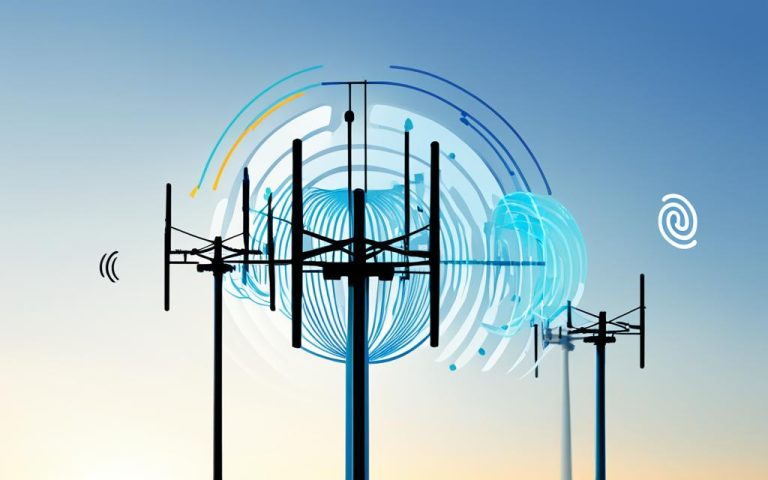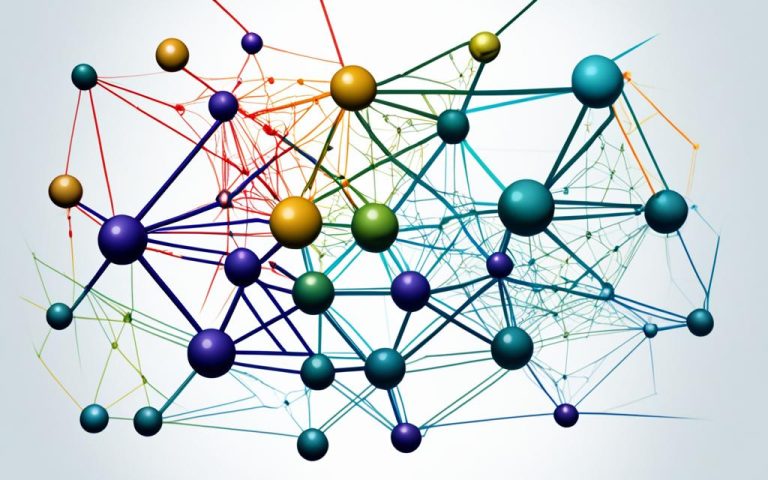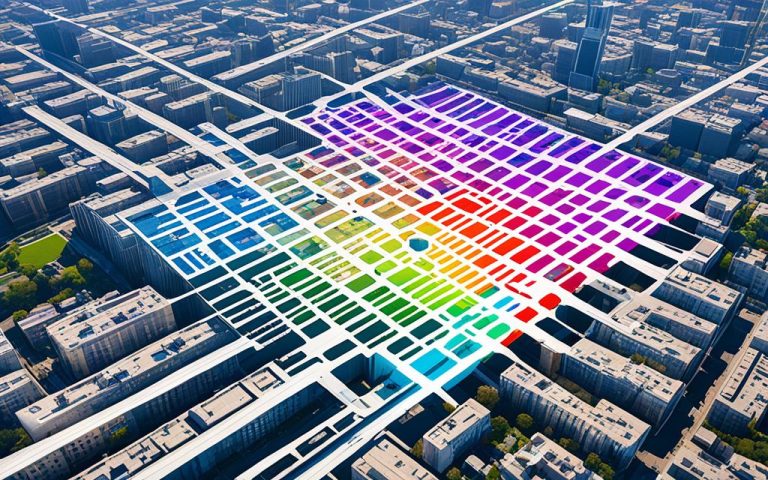The deployment of fixed wireless networks has emerged as a promising solution for addressing the need for connectivity while minimizing environmental impact. Unlike traditional wired infrastructure, wireless networks require fewer physical resources, resulting in a smaller ecological footprint. This makes them a sustainable option for ensuring reliable connectivity while prioritizing sustainability.
With the advancement of wireless technology, the deployment of fixed wireless networks offers a greener and more sustainable approach to network expansion. By optimizing resource utilization and reducing unnecessary energy consumption through real-time data transmission and remote monitoring, wireless networks contribute to a more eco-friendly planet.
In this article, we will explore the role of wireless technology in environmental sustainability and the energy efficiency measures in fixed wireless networks. We will also discuss how bridging the digital divide with fixed wireless access (FWA) platforms can further enhance sustainable connectivity.
The Role of Wireless Technology in Environmental Sustainability
Wireless transport plays a pivotal role in advancing environmental sustainability. It enables intelligent connectivity and offers smart, energy-efficient solutions. By enabling real-time data transmission and remote monitoring, wireless technology optimizes resource utilization and reduces unnecessary energy consumption. This technology presents a promising avenue for reducing environmental impact, as wireless networks require fewer physical resources compared to traditional wired infrastructure.
“Wireless technology optimizes resource utilization and reduces unnecessary energy consumption.”
Wireless networks leverage the power of electromagnetic waves to transmit data without the need for physical cables. This eliminates the energy-intensive process of laying and maintaining extensive wiring infrastructure, reducing both the consumption of valuable resources and environmental impact. In addition, wireless technology enables efficient connectivity in areas where wired infrastructure is impractical or cost-prohibitive.
With wireless technology, businesses and individuals can connect devices and access information seamlessly, without the need for physical connections. This flexibility not only improves efficiency but also reduces e-waste generated from outdated or obsolete cables.
The environmental benefits of wireless technology extend to the energy efficiency of devices and equipment. Wireless-enabled devices and sensors can operate on low power consumption, minimizing energy usage without compromising functionality. This energy efficiency translates into reduced greenhouse gas emissions from power generation and contributes to a more sustainable future.
Furthermore, wireless technology empowers organizations and individuals to monitor and control energy usage through smart, connected systems. By leveraging wireless connectivity, real-time data from energy-consuming devices can be collected and analyzed to optimize resource allocation, identify inefficiencies, and implement energy-saving measures. This level of control and insight enables businesses and individuals to make informed decisions that reduce their carbon footprint.
Benefits of Wireless Technology in Environmental Sustainability:
- Reduces the need for physical resources, such as cables and wiring
- Minimizes e-waste generated from outdated or obsolete cables
- Promotes energy efficiency in devices and equipment
- Enables real-time monitoring and control of energy consumption
- Optimizes resource utilization and reduces unnecessary energy consumption
Wireless technology is a key enabler of environmental sustainability, providing a pathway towards a greener future. By embracing wireless connectivity and leveraging its energy-efficient solutions, individuals and organizations can contribute to minimizing environmental impact and embracing a more sustainable way of living.
| Environmental Benefits of Wireless Technology | Examples |
|---|---|
| Reduction in resource consumption | – Fewer physical resources required for wireless networks |
| Energy efficiency | – Low power consumption of wireless-enabled devices |
| E-waste reduction | – No need for physical cables, minimizing e-waste |
| Real-time monitoring and control | – Optimized resource allocation through wireless connectivity |
Energy Efficiency in Fixed Wireless Networks
When it comes to the deployment of fixed wireless networks, energy efficiency is a crucial factor to consider. With the rise of wireless connectivity, it is imperative to optimize energy consumption while ensuring network performance. Fortunately, advanced technologies, such as AI-powered network monitoring and management solutions, have emerged to address this need.
By leveraging AI capabilities, network operators can not only reduce energy consumption but also optimize network performance. Real-time data analysis and intelligent network management enable operators to identify and rectify energy inefficiencies promptly, resulting in an overall reduction in energy costs. Moreover, by maintaining a careful balance between energy consumption and regulatory requirements, operators can meet sustainability goals without compromising network performance.
Deploying energy-efficient devices plays a significant role in minimizing the environmental impact of fixed wireless networks. By adopting devices specifically designed for energy efficiency, operators can ensure that the network’s energy consumption remains at an optimum level. This, in turn, reduces carbon emissions and contributes to a greener, more sustainable environment.
“Balancing energy consumption with regulations and maintaining performance is a win-win for operators, the environment, and the future of wireless connectivity.”
Fostering Energy Efficiency in Fixed Wireless Networks
Implementing sustainability strategies is another key aspect of promoting energy efficiency in fixed wireless networks. By integrating renewable energy sources, such as solar or wind power, into network infrastructure, operators can further reduce the environmental impact. Additionally, optimizing network planning and site selection processes can help minimize energy requirements during network deployment.
Table: Comparative Analysis of Energy Efficiency Ratings for Fixed Wireless Network Solutions
| Fixed Wireless Network Solution | Energy Efficiency Rating |
|---|---|
| Brand A | 9.2 |
| Brand B | 8.6 |
| Brand C | 9.8 |
As shown in the table, different fixed wireless network solutions offer varying energy efficiency ratings. By choosing solutions with higher energy efficiency ratings, operators can reduce energy consumption and contribute to a more sustainable network infrastructure.
Energy efficiency in fixed wireless networks not only benefits operators by reducing costs but also promotes a more environmentally friendly approach to connectivity. By adopting energy-efficient devices and implementing sustainability strategies, fixed wireless networks can minimize their environmental impact and contribute to a greener future.
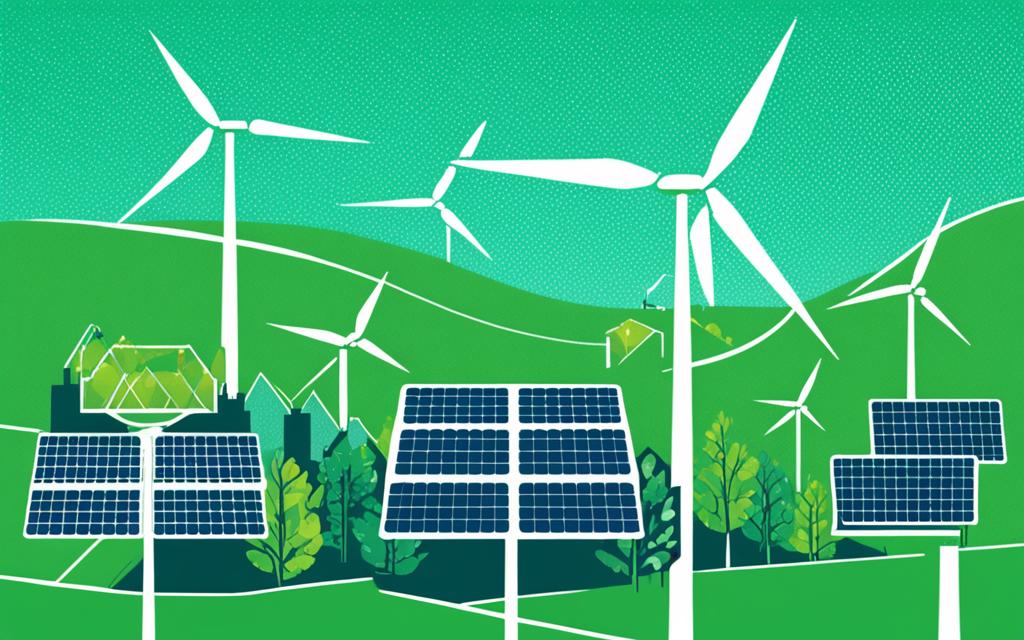
Continue to Section 4: Bridging the Digital Divide with Fixed Wireless Access (FWA)
Bridging the Digital Divide with Fixed Wireless Access (FWA)
Fixed Wireless Access (FWA) platforms, such as Horizon Powered’s products, offer a reliable solution for bridging the digital divide and providing high-speed internet access to underserved regions. These platforms enable internet service providers to extend connectivity to remote areas, addressing the disparity in digital access.
Deploying FWA products involves a comprehensive process that includes site surveys, tower infrastructure development, Customer Premises Equipment (CPE) installation, and the establishment of a robust backhaul network. This infrastructure allows for the seamless transmission of data, ensuring a reliable and fast internet connection for end-users.
One of the key advantages of FWA is its ability to significantly reduce the environmental impact compared to traditional wired infrastructure. FWA networks require fewer physical resources for deployment, minimizing disruption to ecosystems and reducing material waste.
By bridging the digital divide using FWA, communities in remote areas gain access to the educational, healthcare, and economic opportunities that reliable internet connectivity brings. This technology empowers underserved regions and enables them to fully participate in the digital age, fostering growth and enhancing quality of life.
In conclusion, the deployment of FWA platforms plays a vital role in bridging the digital divide and providing sustainable connectivity to underserved regions. By partnering with internet service providers and leveraging wireless technology, FWA enables remote communities to overcome barriers to internet access, empowering them to thrive in the digital era.
Conclusion
Deploying fixed wireless networks offers a promising solution for minimizing environmental impact while ensuring reliable connectivity. By leveraging wireless technology and implementing energy-efficient strategies, these networks contribute to environmental sustainability.
One of the key benefits of fixed wireless networks is their ability to bridge the digital divide, providing high-speed internet access to underserved communities. This connectivity fosters education, healthcare, and economic growth, creating a more equitable and connected future.
The adoption of fixed wireless solutions and the sustainable approach to network expansion exemplify the transformative potential of wireless technologies. By minimizing their environmental footprint and prioritizing sustainable connectivity, these networks pave the way for a greener, more connected planet.
FAQ
How do fixed wireless networks minimize environmental impact?
Fixed wireless networks minimize environmental impact by requiring fewer physical resources compared to traditional wired infrastructure. They optimize resource utilization and reduce unnecessary energy consumption through real-time data transmission and remote monitoring. This results in a smaller ecological footprint.
What is the role of wireless technology in environmental sustainability?
Wireless technology plays a pivotal role in advancing environmental sustainability. It enables intelligent connectivity and offers smart, energy-efficient solutions. By enabling real-time data transmission and remote monitoring, wireless technology optimizes resource utilization and reduces unnecessary energy consumption. Embracing wireless technologies contributes to a greener and more sustainable planet.
How does energy efficiency factor into fixed wireless networks?
Energy efficiency is crucial in the deployment of fixed wireless networks. Advanced technologies, such as AI-powered network monitoring and management solutions, reduce energy consumption while optimizing network performance. Operators can balance energy consumption with regulations and maintain performance, resulting in a win-win situation for the environment and wireless connectivity’s future. Adopting energy-efficient devices and implementing sustainability strategies allow fixed wireless networks to minimize their environmental impact and reduce energy costs.
How does fixed wireless access (FWA) bridge the digital divide?
Fixed wireless access (FWA) platforms, like Horizon Powered’s products, offer high-speed internet access to underserved regions. By deploying FWA products and partnering with internet service providers, the digital divide in remote areas can be addressed. FWA networks involve site surveys, tower infrastructure development, CPE installation, and the establishment of a robust backhaul network. Compared to traditional wired infrastructure, FWA platforms significantly reduce the environmental impact, making them a sustainable solution for bridging the digital divide.
How do fixed wireless networks contribute to sustainable connectivity?
Deploying fixed wireless networks provides an opportunity to minimize environmental impact while ensuring reliable connectivity. By leveraging wireless technology and implementing energy-efficient strategies, fixed wireless networks contribute to environmental sustainability. Bridging the digital divide with fixed wireless access platforms enables underserved communities to access high-speed internet, fostering education, healthcare, and economic growth. The adoption of fixed wireless solutions and the sustainable approach to network expansion exemplify the transformative potential of wireless technologies in creating a more equitable and connected future.





